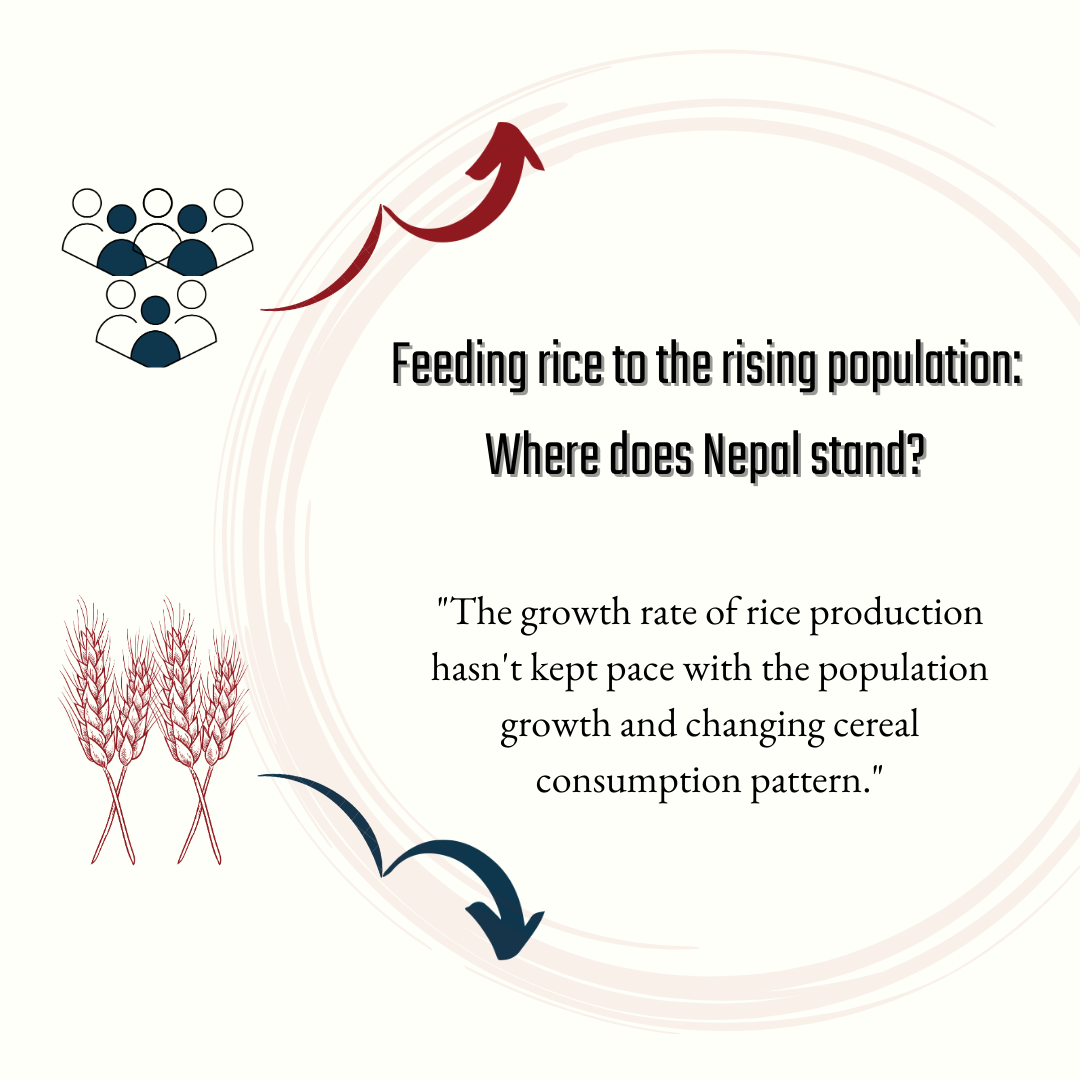Feeding rice | Growing population | Food insecurity

Decades ago, Nepal used to be a rice-exporting country, but now it meets its rising demand through imports.
Rice and paddy amounting to Rs 46 billion were imported last fiscal year.
The reason Nepal has failed in self-sufficiency in rice is that the growth rate of rice production hasn't kept pace with the population growth and changing cereal consumption patterns.
According to a study, in the last 54 years, rice production has grown by 1.5% in the last 54 years in contrast to the population growth rate of 2.3% while Nepal’s per capita consumption of rice is 137.5 kg.
Presently, rice constitutes around 70% of Nepal’s total cereal consumption, a massive shift from the traditional consumption pattern where maize and millet were dominant.

In the fiscal year 2021/21, Nepal produced 5.621 million tonnes of paddy which dropped to 5.13 million tonnes in the next fiscal year and is expected to rise to 5.48 million this fiscal year.
Adequate provision of irrigation and fertilizer supply, farm mechanization and increased land area for cultivation, and favorable monsoon remains key to increasing production volume and productivity.
In an event organized by the International Water Management Institute (IWMI) a couple of months back, some experts highlighted the tremendous potential of Chaite dhaan (Spring Paddy).
One expert was quoted, “Irrigating an additional 100,000 hectares of land in the winter season will gain at least 600,000 MT (expected 750,000 MT) in the first year itself, although there are technical and harvesting challenges.”
Another expert highlighted, “Our current wet season paddy productivity is 3.8 MT/hectare of land while productivity in the spring season for Chaite dhaan is almost double - 7.5 MT/hectare. If year-round irrigation is ensured, both production level and productivity will increase.”
Read More Stories
Kathmandu’s decay: From glorious past to ominous future
Kathmandu: The legend and the legacy Legend about Kathmandus evolution holds that the...
Kathmandu - A crumbling valley!
Valleys and cities should be young, vibrant, inspiring and full of hopes with...
A week into Israel-Iran conflict
The latest escalation between Israel and Iran has entered its eighth day. Heres...